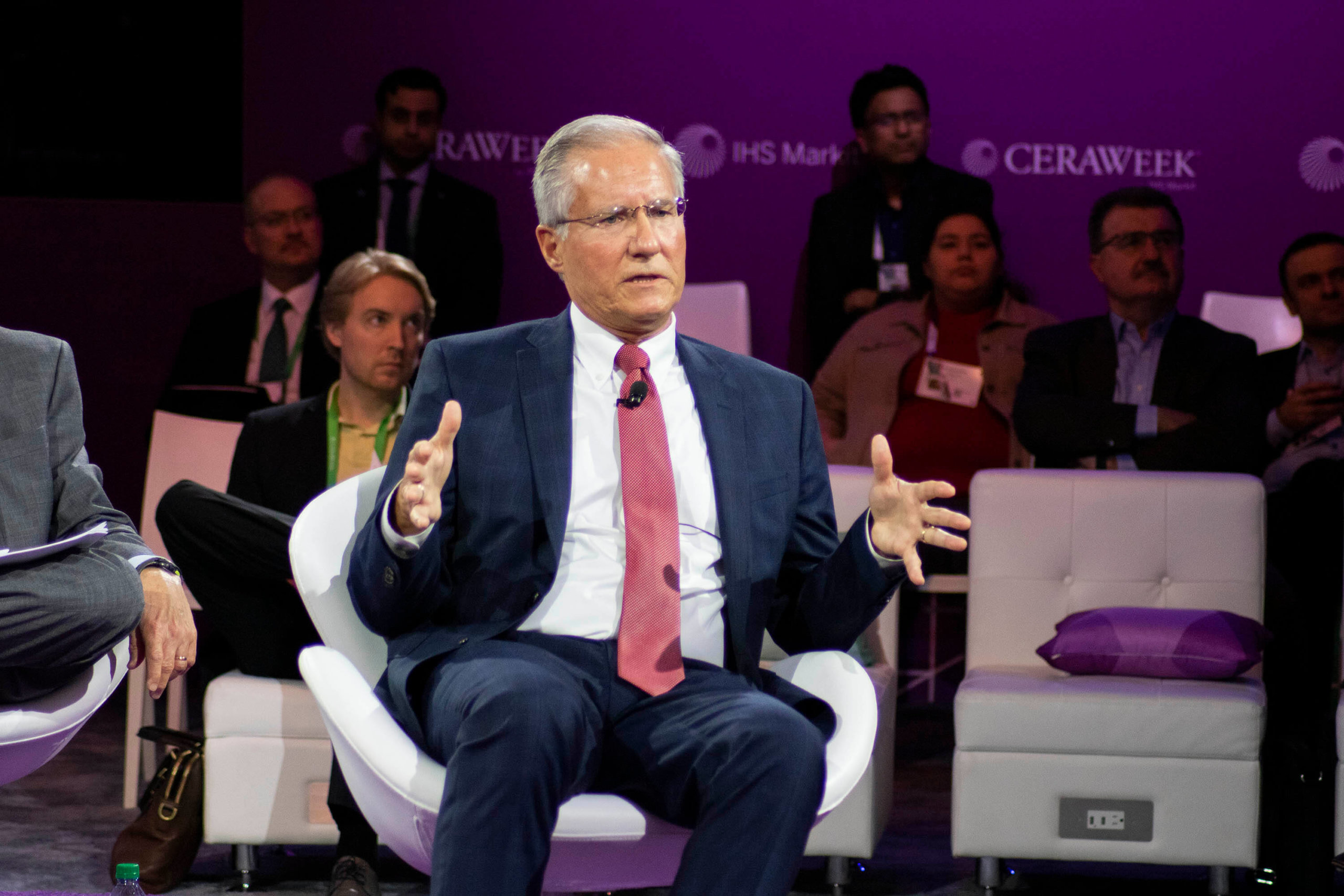 Today is Power day at CERAWeek 2019 where the focus is on the electrical power generators and distributors bringing electricity to our homes and businesses. Like the other industries this week, digital transformation initiatives are on their minds.
Today is Power day at CERAWeek 2019 where the focus is on the electrical power generators and distributors bringing electricity to our homes and businesses. Like the other industries this week, digital transformation initiatives are on their minds.
In a panel, Power: Realizing value from digital transformation, Emerson’s Bob Yeager discussed the use of digital technologies to help predict, manage, and control complex power networks. Digital Transformation involves Digital Twin technology to create an integrated thermodynamic, first principle model of the process, that’s integrated, alive and synchronized with the actual control system.
Another panelist noted that digital transformation starts with people and ends with people. Customers are part of this transformation as well as the people within the companies who serve them.
Another panelist noted that the transition created by the addition of renewable energy supplies to the grid is changing the business models of how electricity arrives to end users. This is part the transformation going on within the power industry. Digital is being used to make the business model better. The transformation still has a way to go.
Bob noted that optimization on the simulated plant can prove out whether the changes will be successful or not—without de-rating or tripping the plant. This digital transformation means that power producers can become more efficient with lower emissions for more sustainable operations.
Another example of digital is using image processing system combined with drone inspections. Although this use case is improving the business, the panelist noted that it’s not necessarily transformative. Digital means interconnection of systems to have the data to make better decisions.
Bob explained that digitalization is a means to an end. Plants can do megawatt control or frequency response or steam temperature control. Simulations can help optimize a plant or fleet of plants to optimize for what’s required for the grid.
One transformation is a consumer moving to prosumer—where with rooftop solar and storage, they can possibly leave the grid completely. Resource coordination and validation will need to be performed by someone to maintain grid stability. One of the barriers to change is current regulations. While the technology is available to be more flexible, the regulations are preventing change.
The issue today is not total megawatts on the grid, it’s keeping stable frequency. What maintains frequency stability is the inertia of spinning turbines to maintain frequency. Bob noted that the regulatory changes are needed to make sure the economics work so that there is enough inertia to keep the grid stable and robust.
On the subject of cybersecurity, it must be inherent. Emerson’s Ovation distributed control system has received designated as qualified anti-terrorism technology by the U.S. Department of Homeland Security (DHS) under the U.S. SAFETY Act. It also takes people, processes and technology, plus a culture around security like companies have around safety.
